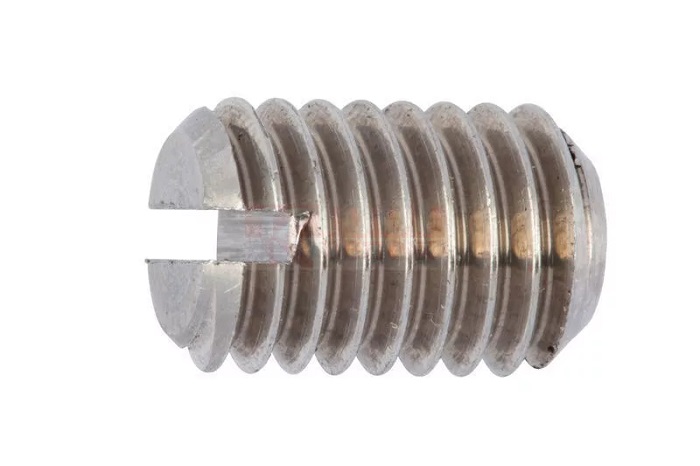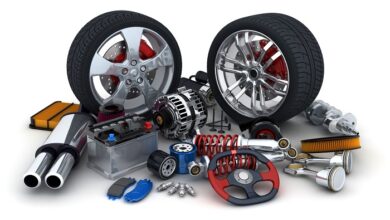Pin DIN 438 with internal cone: an important element of mechanical connections

When creating mechanical systems, structural strength is of particular importance. Pins are often used for this purpose.
Pins are an important component of mechanical systems and ensure accurate positioning and fixation of structural elements. One important type of pin is the DIN 438 internal taper pin. This standard defines the parameters of this type of connection that ensure its compatibility and reliability.
Content
1. Introduction
2. History and origin of the DIN 438 internal taper pin
3. Description and design of the DIN 438 pin
4. Applications and advantages of the DIN 438 pin
5. Production and standardization
6. Conclusion
1. Introduction
Mechanical connections are a key element of any technical system, where the accuracy, reliability and efficiency of the interaction of components are of great importance. Among the variety of means of connection, pins play an important role, ensuring stable and safe connection between mutually compatible elements of structures.
In this article, we will consider a pin with an internal taper according to the DIN438 standard . The study of this type of connection will allow us to reveal its importance, construction, applications and advantages in various industries and technical disciplines. By examining this standard, we will gain important insight into the functionality and standardization of mechanical connections that are critical to the development of modern technology and industry.
2. History and origin of the DIN 438 internal taper pin
Pins with an internal taper became an important part of mechanical systems in the second half of the 20th century, when there was a real need for more accurate and reliable methods of connecting parts. The search for an optimal solution led to the emergence of the DIN 438 standard, which became decisive in the development of this type of mechanical connections.
The German Institute for Standardization, which is known for its systematicity and adherence to high quality standards, developed the DIN 438 standard in order to unify and standardize the process of manufacturing and using pins with an internal cone. This standard was first published in the middle of the 20th century and since then has undergone numerous modifications and improvements in accordance with the needs and requirements of the market.
The history of the DIN 438 internal taper pin is linked to the continuous development of technologies and production processes that have taken place over the past decades. This element of mechanical connections has become a necessary component in the production of machines, equipment, vehicles and other technical systems operating in various conditions.
Thanks to continuous improvement and standardization, the DIN 438 internal taper pin has become a widely used element in many industries, demonstrating its efficiency, reliability and versatility in solving various tasks of a technical nature.
3. Description and design of the DIN 438 pin
Pin DIN 438 with an internal cone is an important mechanical element used for precise positioning and fixation of parts in mechanical structures. Its design is specially designed to ensure a stable and reliable connection between mutually compatible components.
The main elements of the DIN 438 internal taper pin include:
- Cylindrical part: This is the main part of the pin, which has a cylindrical shape. This part is usually made of a high quality metal such as steel or aluminum and has some length depending on the specific requirements of the specification.
- Inner Cone: This is an important structural element that is located at one end of a cylindrical part. The internal cone is designed to create a mating connection with the corresponding conical hole of another part. This cone allows you to precisely align and fix mutually compatible elements, ensuring their stable connection.
- Smooth surface: The DIN 438 pin usually has a smooth surface for easy insertion into the taper hole and convenient use.
- Possibility of fixation: Some models of the DIN 438 pin may have special elements to provide additional fixation of the connection, for example, screw holes for fixation.
Thanks to its simple but effective design, the DIN 438 internal taper pin provides a reliable and precise connection between structural parts. Its versatility and applicability in various industries makes it an indispensable element for engineering and production tasks.
4. Applications and advantages of the DIN 438 pin
DIN 438 pins with an internal cone are widely used in various industries and production. Their efficiency and reliability make them popular among engineers and technicians. Let’s consider the main areas of application of DIN 438 pins and their advantages:
Application:
- Mechanical engineering: In mechanical engineering, DIN 438 pins are used to connect various parts of mechanisms and mechanical systems. They can be used to connect shafts, gears, gears and other components of equipment.
- Automotive Industry: In the automotive industry, DIN 438 pins are used to connect various components of engines, suspensions, transmissions and other automotive systems. They provide a stable and reliable connection, which is necessary for the safety and efficiency of cars.
- Equipment manufacturing: In equipment manufacturing and industrial plants, DIN 438 pins are used to connect equipment parts such as pumps, compressors, valves and other mechanical components.
- Electronics and engineering: In the production of electronic and technical equipment, DIN 438 pins can be used to connect circuit board elements, housings, mechanisms and other components.
Advantages:
- Reliability: DIN 438 pins provide a stable and reliable connection between the components of structures, which allows to increase the stability and safety of systems.
- Accuracy: Due to their internal taper design, DIN 438 pins allow precise positioning of parts in mutually compatible holes.
- Versatility: DIN 438 pins can be used in many fields of industry and production, making them a versatile solution for a variety of technical tasks.
- Standardization: Conformity to DIN standards ensures uniformity of size and quality of DIN 438 pins, which simplifies their production, selection and application.
All these advantages make DIN 438 pins with an internal cone indispensable elements for any engineering and technical solutions where a reliable and precise mechanical connection is required.
5. Production and standardization
The production of DIN 438 internal taper pins is a complex process that requires high precision and compliance with quality standards. The production of these mechanical elements is usually carried out at specialized production facilities equipped with modern machines and equipment for metal processing.
The manufacturing process of DIN 438 pins may include the following steps:
- Processing of raw materials: The manufacture of pins begins with the processing of high-quality metal raw materials, such as steel or aluminum. The raw material is formed and processed to the required size and shape using various machines and processing machines.
- Milling and turning: Pin parts are formed by milling and turning. This process allows you to give the parts the desired shape, dimensions and surface smoothness.
- Creating an internal taper: One of the key manufacturing steps is creating an internal taper at one end of the pin. This may require the use of specialized tools and techniques to ensure high precision and manufacturing quality.
- Machining and Finishing: After forming the main part of the pin and the inner taper, they are machined and finished to remove surface imperfections and give the parts their final shape.
The standardization of DIN 438 pins plays an important role in ensuring their quality, interchangeability and compatibility with other components of mechanical systems. The German Institute for Standardization (DIN) sets and maintains standards for DIN 438 pins, which include dimensions, shape, material and other technical specifications. These standards allow manufacturers to ensure high quality and standardization of their products, which in turn contributes to the introduction and use of pins in various industries.
6. Conclusion
The DIN 438 pin with internal taper is a key element in mechanical systems, providing accurate positioning and reliable connection between structural parts. In this article, we have considered in detail this element, its origin, design, application, production and standardization.
DIN 438 pins are widely used in various industries, including mechanical engineering, automotive, hardware manufacturing, and electronics. They allow you to create stable and reliable connections, which is an important aspect for the smooth operation of technical systems.
The production of DIN 438 pins is a complex technological process that requires high precision and adherence to quality standards. Specialized production enterprises use modern technologies and equipment for the manufacture of these mechanical elements.
Standardization of DIN 438 pins ensures high quality and standardization of their production, which contributes to their wide use in various industries and technical systems.
Overall, the DIN 438 internal taper pin is an important element of mechanical connections that demonstrates its efficiency, reliability and versatility in various technical applications. Its use contributes to improving the functionality and efficiency of technical systems, which is an important aspect in the development of modern technologies and industry.



